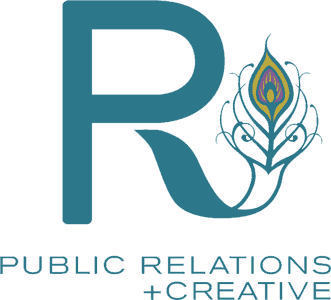PR New York
PR Essentials for New Entrepreneur: 5 Must-Know Tips
Public relations (PR) is not just for big businesses with large budgets. It is for anyone who is looking to build a sustainable business. PR can play a critical role in the success of a new entrepreneur's business. It's a strategic communication process that can help you build your brand, establish credibility, and connect with your target audience. Here are five key things every new entrepreneur needs to know about PR:
1. PR Is More Than Just Media Coverage

When many people think of PR, they think of press releases, news articles, and television interviews. While media coverage is a valuable aspect of PR, it's just one element of your communication and marketing strategy. Here are examples of effective tools in the PR toolbox:
- Media Relations
PR helps you build relationships with journalists and media outlets to secure favorable coverage.
- Content Creation
Developing compelling content like blog posts, videos, and infographics that resonate with your audience is another critical component of a strong public relations plan.
- Social Media Management
As a new entrepreneur, PR can help you use your social platforms to engage with your audience, share valuable content, and respond to feedback.
- Community Engagement
Participating in community events, sponsorships, and partnerships is another PR tactic that will help you build goodwill and trust within your community.
- Crisis Management
Public relations can help you prepare for and effectively manage crises or adverse publicity that may arise.
Understanding PR tactics will help new entrepreneurs create a well-rounded strategy that leverages multiple channels to enhance your brand's visibility and reputation.
2. New Entrepreneurs Need to Begin with a Strong Messaging Strategy
Photo Credit: VladaKarpovich | Pexels
Before diving into PR activities, you need to have a clear and consistent message about your business.
- What problem does your product or service solve?
- What sets your business apart from competitors?
- Who is your target audience, and what are their needs and preferences?
Your messaging should be concise and tailored to your audience's needs and interests. PR efforts will be more effective when built on a solid messaging foundation.
3. Relationships Are Key
PR is about more than just sending out press releases. It's about building relationships with journalists, bloggers, and influencers who can help tell your story. Take the time to research and connect with relevant media outlets and reporters in your industry. Personalized pitches and building genuine relationships can lead to better coverage.
Here are some key relationships entrepreneurs should prioritize:
- Media Contacts: Establish connections with journalists, bloggers, and influencers in your industry. Personalize your outreach and offer valuable insights to build trust and enhance your chances of getting media coverage.
- Customers: Cultivate strong relationships with your customers through excellent customer service, engagement on social media, and personalized communication.
- Industry Peers: Network with fellow entrepreneurs, industry leaders, and associations. Collaborative efforts and partnerships can boost your credibility.
- Community: Engage with your local community through events, sponsorships, and philanthropic initiatives. Positive community relations can lead to word-of-mouth referrals and goodwill.
4. Content Creation Matters

In the digital age, content is your currency. PR can help entrepreneurs create high-quality, engaging content that showcases your brand’s expertise and provides value to your target audience. As a new entrepreneur, consider making content in various formats, including:
- Blog Posts: Share informative articles that address industry trends, customer pain points, or solutions related to your product or service.
- Videos: Create video content, such as tutorials, product demonstrations, or behind-the-scenes glimpses of your business.
- Podcasts: Launch a podcast to discuss relevant industry topics and invite guest experts to broaden your reach.
- Infographics: Visual content like infographics can simplify complex information and make it shareable on social media.
- Ebooks and Whitepapers: Offer in-depth resources that provide value to your audience and demonstrate your expertise.
Reach a wider audience by distributing your content through various channels, such as your website, social media, and email newsletters.
5. Crisis Preparedness is Non-Negotiable

Be prepared for the unexpected. Crises can happen in any business, and how you handle them can impact your reputation as a new entrepreneur. To effectively manage crises, a well-rounded public relations strategy can help you:
- Develop a crisis management plan that outlines roles, responsibilities, and communication procedures.
- Be transparent and honest when addressing issues, acknowledging mistakes, and providing solutions.
- Act swiftly to contain the situation and prevent further damage.
- Learn from the experience and use it to improve your processes and prevent future crises.
PR efforts should not be a shot in the dark. Use analytics and key performance indicators (KPIs) to track the effectiveness of your PR campaigns. This could include metrics like website traffic, social media engagement, media mentions, and customer inquiries. Analyze the data and adjust your PR strategy accordingly. What works for one business may not work for another, so be flexible and pivot as needed.
As a new entrepreneur, building a positive reputation and brand awareness through PR is a long-term investment in your business's success. Don't expect overnight results. Instead, focus on consistently delivering value to your audience, nurturing relationships, and refining your messaging and content. Over time, your efforts will pay off through increased brand recognition, customer loyalty, and business growth.
Understanding these essential principles can help your new entrepreneurial venture thrive in a competitive market. And if you need advice on how to get started, we can help. At RPR, our approach focuses on creating personalized strategies that align with your goals and maintain best practices without compromising quality. Schedule a call to discuss how we can help you invest in your new venture with PR strategies that work.
Public Relations vs. Content Marketing: Which Strategy Fits Your Brand Better?
With so many opportunities for today’s businesses to share their story, figuring out which tools and strategies will serve your brand best can be challenging. Public relations (PR) and content marketing play different roles in building brand awareness and audience engagement. Is one better than the other? Here’s what you need to know about public relations and content marketing and how they work together.
Content marketing focuses on creating and distributing content to attract and engage a target audience. While it can contribute to a positive brand image, its main goal is educating, informing, and entertaining the target audience. Content marketing is often used to support broader marketing and business objectives, like driving profitable customer action, generating leads, raising brand awareness, and keeping customers.
Public relations is a strategic communication discipline focused on managing and maintaining a positive reputation for a brand, organization, or individual. PR professionals work to build and nurture relationships with various stakeholders, including the media, customers, investors, government entities, and the public. The goal of PR is to shape public perception, influence opinions, and handle crisis situations effectively.
The Changing Landscape of Brand Awareness

In the past, public relations relied heavily on newspapers, magazines, and other news outlets like television and radio to build brand presence. Today, public relations also uses new tools to develop and maintain positive brand awareness using websites, online news sources, and blogs.
Like public relations, content marketing focuses on improving business brand awareness, but content marketing uses different tactics. In today’s digital world, the lines between content marketing and PR are less defined. Both are important parts of a company’s overall marketing and communication strategy. Public relations (PR) and content marketing work together to tell a company’s story.
Public Relations Versus Content Marketing—How They Stack Up

When it comes to content marketing and public relations, it’s not a question of choosing one over the other. Your specific goals, target audience, and the nature of your business determine which tools and tactics you should use. Both public relations and content marketing have distinct advantages, and the ideal approach often involves integrating both into your overall brand strategy. Here's a breakdown of their respective strengths:
-
Public Relations
-
-
- Reputation Management: Public relations manages and enhances a brand's reputation. It can help build trust, credibility, and a positive image among stakeholders.
- Media Coverage: PR professionals have expertise in securing media coverage, which can provide third-party validation and exposure for your brand.
- Crisis Management: Public relations is essential for effectively handling and mitigating crisis situations, helping protect your brand during challenging times.
- Relationship Building: PR fosters relationships with key stakeholders, including the media, customers, investors, and government entities.
-
-
Content Marketing
-
- Targeted Audience Engagement: Content marketing is highly effective at reaching and engaging a specific target audience with tailored content that addresses their needs and interests.
- Educating and Informing: Content marketing focuses on providing valuable information and resources to your audience, positioning your brand as an authority in your industry.
- Lead Generation: It can be a potent tool for generating leads, nurturing prospects, and converting them into customers through content-driven strategies.
- Consistency and Long-Term Strategy: Content marketing is often part of a long-term strategy, focusing on consistency and creating evergreen content that retains value over time.
Content marketing is all about getting people interested in the stories a brand wants to share. Whether it's through blog posts or social media updates, it's about telling a compelling tale. On the other side, public relations is all about building relationships with writers and journalists who spread the word about the brand. PR helps you build your brand’s reputation.
They meet in the middle with storytelling. Both traditional and digital PR can support content marketing by getting a brand's stories and content into the hands of influential writers and journalists. When that happens, it's like giving your content a boost, and it’s more likely to grab attention, go viral, make more people aware of the brand, and drive audience engagement.
Integration Is Key

While public relations and content marketing have distinct advantages, they are not mutually exclusive. They often work best when they are integrated into one comprehensive strategy. Here's why:
- Enhanced Credibility: Combining PR's media coverage with content marketing's educational content can establish your brand as credible and authoritative.
- Content Amplification: PR can help amplify your content by securing media placements for your articles, blog posts, or videos, expanding your reach.
- Storytelling Synergy: Both PR and content marketing rely on storytelling. When integrated, they can create a consistent narrative that resonates with your audience.
- Crisis Communication: During a crisis, a well-planned content strategy can support PR efforts by providing precise and accurate information to the public.
The bottom line is you need both. Ultimately, the choice between public relations and content marketing depends on your specific goals and the stage of your business. In many cases, a balanced approach that leverages the strengths of both disciplines is the most effective strategy. Remember that the key is not which one comes out on top but how they can complement each other to achieve your overall marketing and communication objectives.
Are you seeking strategies to increase brand awareness using public relations and content marketing? Then schedule a consultation with us today and let our experts at RPR show you how to get the most out of a well-integrated campaign that includes both PR and content marketing.
From Unknown to Unstoppable: How a PR Firm Can Transform Your Business
Recently, the “Barbie” movie smashed media expectations with a record $155 million on opening day to become the year's biggest debut. The success is attributed to disruptive PR and marketing activities ranging from pop-ups, themed Airbnbs and Xbox consoles, and other partnerships.
The movie’s success exemplifies what PR can do for your business. However, you need an experienced team to achieve these results. The blockbuster PR team created a campaign that generated lots of social media buzz, giving a child's doll remarkable acceptance by adults. While everyone will focus on the revenue, the movie’s success showcases how PR firms can help transform your business from unknown to unstoppable in many ways.
In this article, you will learn what a PR firm is, its role, and how PR can help you build a formidable business.
What's a PR Firm?
A PR firm assembles people and tools to create a campaign strategy to help you achieve your business goals. Unlike in-house PR teams, an agency can work with multiple businesses simultaneously thanks to its industry expertise and strong relations with the media.
What Does A PR Firm Do?
A PR firm supports your business growth through services that include the following.
- Crisis management
- Customer research
- Monitoring trends and brand mentions
- Managing social media and communications
- Managing investor relations
- Pitching
- Media Relations
- Content marketing and SEO
- Writing press release
- Securing media coverage
How Can a PR Firm Transform Your Business?
A PR firm can help you create brand awareness and build authority through a series of well-crafted strategies and methods such as:
1. Crafting a Compelling Brand Story
According to Headstream research, 55% of consumers will consider buying from a brand in the future if they love their story. Brand storytelling helps to humanize your business, fostering customer connection on an emotional level. An example of the impact of storytelling is evident in Steve Jobs's Apple product launch speech. In 2003, he persuaded users to pay 99 cents per song on the iTunes store by presenting a solid argument that triggered listeners' emotions. In the same way, a PR firm studies your products, analyzes the target audience, and creates a compelling story that helps them imagine the transformation you offer. The outcome is often improved brand loyalty, word-of-mouth marketing, and customer advocacy, amongst other benefits.
2. Creating and Deploying Crisis Management Plans

According to a PWC survey, 96% of businesses experienced a crisis in the last two years, and 76% had a medium-to-high impact on operations. A well-crafted crisis management plan helps you to respond to disruption and maintain your brand reputation quickly. Without crisis management PR, your business might struggle to get back on its feet after a negative public occurrence. A PR firm creates PR plans that integrate employee, consumer, and stakeholder communication to convey the brand's position, plans for fixing the issue, and regular updates. That way, you control the narrative and win public trust. The PR firm also ensures this plan is effectively deployed using different channels. These include social media, press releases, executive interviews, and many more. If perfectly executed, you can turn a crisis into a growth opportunity for your business.
3. Securing Media Coverage

Journalists are often inundated with pitches from different businesses. Therefore, getting their attention might take time. However, PR agencies can help you get media coverage thanks to existing relationships with journalists. One of the roles of a PR firm is building relationships with the media, which comes in handy when they manage your campaign. A PR firm will know the best media channels, the types of stories they accept, and how best to pitch your business. Their relationship helps you save costs on pitching to the wrong platforms and can quickly get your news out to the right audience. A successful interview or press release can go viral, generating massive traffic and sales for your business.
4. Creating Effective Campaigns

PR firms understand the elements of an effective campaign thanks to experience working on different projects. They also have expertise in campaign strategy creation, like design, copywriting, and SEO. This unique experience helps them to create effective campaigns fast without multiple trials. Whether it's a product launch, announcement, or rebranding campaign, you can expect strong performance and ROI.
5. Monitoring Industry Trends for Media Opportunities
Daily, we experience new trends, which can offer opportunities for visibility. A PR firm uses analytics and PR tools to monitor trends and identify which one to leverage. Subsequently, they can create a campaign around that topic to build awareness. Monitoring these trends helps you drive more traffic and sales to your business. With more visibility comes improved customer engagement, retention, and overall growth
Partner with a PR Firm to Grow Your Business

PR offers multiple benefits when in experienced hands. Collaborating with a reputable PR firm allows you to experience PR benefits such as building brand awareness, boosting organic traffic, and improving sales conversion. With RPR Firm as your partner, you will get personalized strategies, access to our expert network, and creative content to increase campaign results. Schedule a free consultation with us to start your journey from unknown to unstoppable.
What is a Boutique PR Agency? Is It Worth Investing?
Did you know small and medium businesses (SMBs) make up 99.9% of all U.S. businesses? This explosive growth of SMBs has resulted in higher demand for specialized public relations services that understand their unique challenges and opportunities.
Entering the fold are boutique PR agencies—agile, specialized firms that provide tailored services specifically designed to cater to the unique needs of their clients.
As we delve deeper into the world of boutique PR agencies in this article, we'll examine their distinct characteristics and help you determine whether such an investment aligns with your business goals. Ready to learn more? Let's explore together.
What is a Boutique PR Agency?
Boutique PR agencies are small, compact teams of specialized professionals striving to achieve optimal client results. They often deploy comprehensive strategies such as media outreach, content marketing, and more. Typically a small and structured team, boutique agencies hold a niche focus for public relations. They differ from full-service firms that provide general PR services across a range of industries.
What Does a Boutique PR Agency Do?

A boutique PR agency has experts who can offer full-service public relations in particular industries or business types, such as SMBs. Ideally, this involves:
- Content marketing: Creating and publishing thought leadership articles and op-eds in reputable media outlets.
- Community relations: Securing opportunities to support community projects and build goodwill with the target audience.
- Media monitoring: Identifying negative posts about your company and crafting a plan to mitigate the effects.
- Media training and representation: Training spokespeople on how to give professional media interviews that convey crucial messages accurately.
- Crisis management services: Handling controversies that can hurt public confidence in your company.
- PR campaign creation: Creating a campaign that targets influencers, media outlets, journalists, and social media to enhance brand reputation.
Why Should You Hire a Boutique PR Agency?
Hiring a boutique PR agency is a partnership. It offers direct access to the team, and you are part of the PR process. Let's explore other benefits.
1. Access to a Versatile Small Expert Team
Boutique PR agencies typically have a small but versatile team of five to ten members with a deep understanding of your industry. This knowledge diversity allows each member to complement each other for effective results. Moreover, these agencies often focus on a specific niche, so you benefit from working with domain experts who see your business as a partner.
2. Personalized and Attentive Service
With a smaller client base, boutique PR firms can prioritize each client and provide personalized and attentive services. They invest time in understanding your business, industry, and target audience to create strategies that align with your needs. More often than not, you'll work with the same individuals throughout the project, fostering synergy and better performance.
3. Cost-effective PR Services
In contrast to large PR firms, boutique agencies typically charge lower fees. According to a Sortlist article, you could potentially hire a boutique agency for as low as $5,000, while larger PR agencies may charge upwards of $25,000 for a monthly retainer. Therefore, partnering with a boutique PR agency could be a viable solution if budget constraints exist.
4. Flexibility
Boutique PR firms are agile, capable of responding swiftly to changes in trends and capitalizing on new opportunities. Their small client base and versatile team offer a unique advantage to establish your business authority and increase awareness faster, giving you a competitive edge.
5. Enhanced Communication and Transparency
One of the hallmarks of boutique PR agencies is the direct access they offer to their team and even the CEO, ensuring clear, timely communication and transparency throughout the PR process.
Critical Considerations Before Investing in a Boutique PR Agency
Several factors need careful consideration before a boutique PR agency investment. For instance, it’s essential to understand the budget implications. As we stated earlier, boutique agencies often offer more competitive pricing than larger firms, but the exact costs can depend on your specific needs.
Additionally, assessing the scope of work and the agency's capacity to handle the project is crucial, as boutique agencies may face limitations in scalability.
Finally, evaluating the agency's reputation and track record, including past clients and case studies, can provide a clearer picture of its capabilities and results.
How to Know if You Need a Boutique PR Firm

Your business might need a boutique PR firm if you want to:
- Improve brand awareness and reputation to break into new markets.
- Get customized PR solutions that align with a business goal with a limited budget.
- Access senior-level experts with domain experience in your industry.
- Stand out from your competitors with a creative and innovative PR strategy.
- Work with a flexible and agile PR team that can adapt to trends and opportunities.
How to Find the Best Boutique PR Agency for Your Business
You can avoid losing money and time by following these simple processes:
- Clearly define your business PR goals and objectives.
- Research and compare agencies based on relevant experience and services.
- Request proposals and pitches from top candidates from the research.
- Evaluate proposals to identify the feasibility of their offers.
- Interview successful agencies to understand their principles and process.
- Reach out to past clients of the agency to get more information.
- Sign a contract and request project details.
Should You Invest in a Boutique PR Agency?

The value of investing in a boutique PR agency becomes evident when weighing the benefits and considerations presented. Their personalized, cost-effective services, targeted expertise, and flexibility are notable advantages for small businesses or niche sectors.
However, it's essential to align your specific needs, budget, and goals with the capabilities of a boutique agency. While they can provide unparalleled, dedicated service, the potential limitations regarding scalability or broad-ranging PR requirements are worth noting.
Therefore, making a well-informed decision that suits your unique business objectives best is imperative. Remember, the decision ultimately hinges on your business needs and the PR agency's capacity to meet those needs effectively. Be sure to undertake thorough research and due diligence before making your investment.
Are you ready to unlock the benefit of working with a boutique PR agency to grow your business? Schedule a call to see who we can help you achieve exceptional growth with PR.
The Ultimate Guide on How to Hire a PR Agency in 2023
Outsourcing PR activities is the best option if you own a small business and need to break into new markets. Not only does it save time, but it also enables you to get the best results faster while you focus on building a unique product. However, the sheer number of PR agencies promising different results can make the hiring process daunting. In this article, you will learn everything you need to hire a PR agency in 2023, including the types, costs, and questions to ask when interviewing firms.
How to Hire a PR Agency in 2023
Here are steps to prioritize if you want to hire a PR firm in 2023 without making costly mistakes
Set Clear Objectives that Align with Business Goals
Many PR campaigns fail due to a lack of direction. You hire a PR agency because your competitor has one, and you try to replicate their tactics without considering how it affects your goals. That's a remedy for disaster, and you won't get the right results, especially if you hire a PR company that's only interested in the pay and not your business. To avoid this, you must first set clear objectives that align with business goals. For example, if your marketing goal for the first quarter is to reach 1 million people, your PR tactics will involve media publications, guest blogging, and other awareness-based strategies. This way, you can easily track key performance indicators and identify if your PR firm is getting the right results.
8 PR Campaign KPI to Prioritize
- Sentiment
- Share of voice
- Earned media value
- Media impact score
- Relevance index
- Key message penetration
- Quality of coverage
- Social engagement
Create a Budget that Aligns with Your Objectives

When setting your budget, consider your in-house PR workforce, business goals, and the type of PR firm you need. A full-service PR company might cost more than a crisis management firm. Consider this as they guide you in choosing the best PR firm for your business.
What's the Cost of Hiring a PR Firm in 2023?
According to the Clutch PR pricing 2023 report, you can hire a public relation service company for a $100- $150 hourly rate. However, larger PR agencies might charge up to $500 hourly. In contrast, retainer PR agencies might charge between $1500 to $10,000 monthly. You can also expect larger PR firms to charge up to $25,000 monthly.
Research PR Firms
With your clear objectives and budget, you should research a PR agency that meets your requirements. Your goals will guide you in choosing the right PR services and type of agency. You should ask for recommendations from friends, check review websites, and read reviews from forums or the PR marketplace. Select your best 10 PR agencies and schedule a consultation interview to get more information and see if they are a good fit for your company.
Types of PR Firms and Their Services

Here is a list of different types of PR agencies and the Services they render
- General strategic communications PR agency focuses on all aspects of business PR strategy. Services include reputation management, brand awareness, media relations, internal communications, speech writing, crisis communications, investor relations, and more.
- Press communication PR agency handles all strategies to improve media relations. Services include outreach, pitch writing, securing media coverage, interviews, and more.
- Crisis communication PR firm focuses on creating and implementing crisis management plans. Services include risk planning and mitigation, crisis communications planning, crisis PR training, strategic counsel, and on-site crisis management support.
- Internal communications focus on disseminating information within the organization. Services include newsletters, announcements, training guides, policies, and procedures.
- Investor Relations PR company facilitates effective communication between executive leadership and investor stakeholders. Services include conducting reputation audits, running reputation campaigns, strategic communications, and coordinating investor day events and announcements.
- Reputation management PR agency handles all strategies to improve brand perception in the media. Services include web monitoring, training, content marketing campaigns, strategic messaging, negative content suppression, and social media reputation management.
Interview Qualified PR Firms

Gather information about the PR agencies by asking strategic questions. The interview will help you understand their ideology, strategy, experience, and values. Consider agencies whose values align with yours and foster seamless communication. This will go a long way in building effective bonds that turn them from just an agency to a partner dedicated to your business growth.
Questions to ask During an interview
Here's a list of questions to ask during the interview
- Do they specialize in your industry?
- How will the firm get you media coverage?
- What's their pricing plan and cost?
- How do they measure success?
- How will they work with your marketing team?
- What should you expect in the first three months?
- Can you reach out to their previous clients to get more information?
- Will they assign an account manager to your business?
- Do they offer marketing and sales services too?
Onboard PR Firm
After the interview, review all proposals and strategies and decide the best-fit PR company.
Contact your choice agency and sign the contract details. You should also set clear expectations so you are on the same page before work commences. Provide the PR firm with relevant information and documents to enable them to understand your business. It's also important to set strict communication channels and plans for effective collaboration.
Partner with the Best PR Agency for Business Growth
At RPR, our services integrate customer research to identify critical issues and customer behavior, enabling us to create an effective PR strategy for your business.
Schedule a free consultation today to partner with us for strategic growth.
5 PR Platforms You Need to Know in 2023
Success in public relations is more than being an expert. You need a committed team, knowledge of current trends, strong relationships, and data-based decision-making. But that's not all; to streamline your processes, you also need the right PR platforms. Since there are many PR tools out there, we have compiled a list of the five best PR platforms you need to know.

1. Meltwater
Meltwater is a game-changing tool every PR professional should have in their arsenal. The PR platform provides targeted media monitoring, social media listening, and analytics tools for improved performance. You can track brand mentions and make data-driven decisions using the analytics features. It can also be helpful to show stakeholders the impact of PR and prove a case for continued investment.
You can also stay on top of conversations, allowing better audience engagement and crisis management. For example, if there's mention of your brand in negative reviews or allegations, you will get alert and quickly respond to the news. This way, you control the narrative and maintain brand reputation. In addition to tracking brand mentions, you can also share analytics with your team members for seamless collaboration and improved PR strategies.
2. Cision
Cision is a leading PR software that helps brands manage media relations, distribute press releases, and monitor earned media performance. This has revolutionized how PR professionals manage their campaigns and media relationships by providing the necessary tools to streamline workflows and achieve maximum impact. One of its main features is the global media database that houses over one billion journalists, influencers, and media outlets, making it easier to target the right audience for your PR campaigns. With this feature, you can quickly identify and connect with the right journalists and influencers in your industry. Doing this will increase the chances of securing media coverage and amplifying your message to a broader audience.
The advanced brand monitoring features allow you to track mentions of your brand or specific keywords across various media channels, including social media platforms, news websites, and blogs. This way, you can adjust your strategy to meet urgent industry needs and score profitable points.
Cision also provides comprehensive analytics and reporting features to track the reach and impact of media coverage, monitor sentiment analysis, and generate customizable reports. Moreover, you can distribute press releases directly from the platform, which saves time and allows you to monitor the outreach performance. This PR management software offers unlimited benefits which can complement your expertise and lead to improved performance.
3. HARO (Help a Reporter Out)
HARO is one of the must-know PR platforms to connect directly with journalists looking for expert sources and get your clients or brand featured in top-tier publications. When you sign up as a source, businesses can receive daily emails with media opportunities in their industry.
Beyond securing valuable media coverage as you respond to these queries, you also boost your link-building profile and foster stronger relationships with journalists. HARO is a cost-effective way to gain media exposure and establish thought leadership. It's also an excellent tool for journalists to access a pool of experts and reliable sources for their publications.
4. Prezly
Prezly is an all-in-one PR platform in 2023 that empowers you with features to manage campaigns and engage target audiences effectively. It focuses on streamlining communication and enhancing relationships with journalists, bloggers, and influencers. This unique media relations software provides many features like media database management, press release distribution, story pitching, and contact management. For instance, you can use the multimedia newsroom as a central hub for all your press releases, images, videos, and contact information. This feature lets you create visually stunning and interactive newsrooms showcasing your brand's story.
In addition, you can use email distribution tools to create, track engagement metrics, and schedule follow-up emails. Prezly also provides analytics to measure the reach and impact of your PR campaigns, helping you refine your strategies in real-time and stay one step ahead of the competition.
5. Mention
Mention is an exceptional tool that revolutionizes how businesses monitor their online presence and manage their brand reputation. It allows companies to track brand mentions, competitors, and industry news across various online platforms. This PR platform provides real-time alerts, sentiment analysis, and social media listening capabilities to stay on top of online reputation. Mention also helps you to identify PR opportunities and respond to customer feedback promptly.
Furthermore, it allows you to share mentions with your team members, assign tasks, and track progress within the platform. This facilitates effective collaboration, ensuring that all mentions are addressed adequately, leading to better customer engagement.
Grow Your Business with Professional PR Services

An effective PR strategy integrates human expertise, tools, relationships, and creativity. As a forward-thinking business, you must integrate analytics and effective content distribution into your approach to guarantee better campaign performance. Thanks to technological advancements, PR platforms like Mention, Cision, Meltwater, and HARO now offer reputation management, brand mention tracking, and campaign measurement features. This allows you to get real-time insights, track industry trends, and respond to crises faster.
However, handling all these PR platforms on your own can be overwhelming, expensive, and time-consuming. That’s why you need to partner with an experienced and result-driven PR agency to get the best result on your PR effort. At RPR Firm, we help brands to maximize their PR campaigns that drive trackable results. Ready to optimize the ROI of your PR campaign? Schedule a free consultation to get a personalized PR strategy.
How PR Improves Investor Relations
Whether you're an early-stage start-up hungry for that first round of funding or a business navigating choppy waters, PR is your secret weapon. Sure, a slick pitch deck can dazzle, but does it really tell your brand's story? Does it solidify your company's credibility? With a tailored PR strategy, you're not just selling—you're sharing a portfolio of your brand's value, weaving your narrative, and showcasing your industry expertise to those potential investors. So, let's dive into the five powerful ways PR can ramp up your investor relations, reel in that funding, and strengthen existing partnerships when the going gets tough.
1. Building Credibility and Trust

Investors tend to associate with brands with good reputations. According to a report, 82% of investors agree that familiarity with a brand's name significantly influences investment decisions. This is critical if you want to attract new investors and retain the existing ones. A well-defined PR strategy focuses on fostering open and transparent communication patterns within a company. For example, the PR team is in charge of publishing press releases with company financials, conveying the progress of specific projects, and informing the public of business dealings. When there's open communication at all stages, the investors will trust your brand to deliver on promises and utilize investment well. However, without PR fostering this clear line of communication and interaction, you leave room for speculation, which can jeopardize your company's long-term growth.
2. Managing the Company's Image
Perception isn't only important when building sales and marketing strategies; it's also vital in attracting new investors to partner with your business. Public relations can create a positive image representing your brand's true identity in the media space. PR tactics like press releases, guest blogging, corporate social responsibility projects, and more can showcase your company values. PR also serves as an engine to distribute a company's achievements and control the narrative if there are negative speculations about your brand. These activities help to shape positive perceptions amongst investors, increasing the possibility that they will invest in your company.
3. Improving Market Perception and Valuation

Market perception and brand valuation are vital factors influencing investors' decisions to commit financially to your company. If your business is perceived as market risk or without prospects, your chances of attracting financing will be reduced. However, implementing an effective PR strategy can build market perception, which impacts brand valuation. For example, PR strategies like expert interviews, guest blogging, and thought leadership initiatives can help showcase your field expertise. In addition, it serves as a medium to explain your business's unique value, the science behind your innovation, and how it benefits the public. Regularly discussing your company will help investors understand the possible growth curve and investment opportunities.
4. Effective Crisis Management
In times of crisis, everyone is on edge. Shareholders worry about stock collapses, employees fear layoffs, and consumers may boycott your business if issues aren't addressed properly. It's even worse if you are in talks with investors, as many will withdraw from the deal. An effective PR strategy will have a crisis management plan that communicates your brand's narrative and de-escalates any issues before they get out of hand. Also, the PR team will create and distribute internal communication documents amongst shareholders to explain the company's problem-solving approach. With an effective crisis management plan, you can quickly dispel any speculation in the mind of your shareholders. This proactive approach reassures investors of the company's commitment.
5. Facilitate Effective Investor Education

Investors often conduct a background check before investing in a company, including possible conflicts of interest, business reputation, financial reports, and initiatives you support. Online information about your company, which is not in your pitch deck, could be the deciding factor in sealing the deal. Implementing effective PR strategies can serve as a tool to educate investors about your company's activities. Publishing product press releases, brand stories, case studies, quarterly financial reports, and project updates will help build a credible online portfolio. This information will be easily accessible to investors and help them understand your business beyond a pitch deck. Subsequently, they can make informed decisions about investing in your business.
Get Started Improving Investors Relations with Effective PR
Every business needs a continual investment inflow to maintain a sustainable growth curve. Although an innovative business idea might attract investors, it takes more than a visually-appealing pitch deck to get investment. Your company's market perception, ability to manage crises, and reputation also play vital roles in attracting and retaining investors. In summary:
- Implementing effective PR strategies can help you build these additional requirements and support investor relations.
- You can use expert interview features to position yourself as a thought leader and build hype around your innovative solutions.
- A well-implemented crisis management plan can also help you to manage investors' speculation and any public reputation damage in times of crisis.
Achieving these results isn't magical but a gradual process requiring a professional team and strategies. At RPR Firm, we help brands create effective public relations strategies that boost brand awareness, revenue growth, and investor relations. Book a free consultation to experience how our PR services can help you win investors.
4 Top PR Ideas for the Fast Food Industry with Practical Examples
The food industry is dominated by brands that can excite customers' taste buds, from McDonald's and Burger King to Subway and Taco Bell. However, with the growing number of food businesses with an estimated CAGR growth of 10.76% from 2022 to 2029, serving tantalizing food alone won't keep you in the game. Besides the growing competition and consumers' craving for exceptional customer services, you also have to deal with the crisis in the food business. Harnessing the power of public relations to create memorable experiences for your customers, forge strong connections, and deftly navigate any crisis that comes your way can help you do just that. Check out our list of the best PR ideas for the food business with examples of how successful brands have used them to drive quality results.
1. Build Hype with an Experiential Marketing Strategy

Experiential marketing, also called engagement marketing, is a strategy that aims to build lasting connections with consumers by forging practical and immersive experiences. This strategy allows you to deliver how consumers would love to experience their favorite meals, snacks, etc.
Imagine participating in preparing your favorite meal, living in a doughnut-themed city, or getting a personalized chocolate bar. These are all possible PR campaign activities that can help you build hype for a new product or relaunch your restaurant. Taco Bell's Hotel "The Bell" launch is an example of experiential marketing at its best. The PR campaign combined the Fear of Missing Out (FOMO) and the brand's impressive fanbase to create buzz and give customers an exclusive experience. The hotel has a Taco Bell-themed setup, like sauce packet-shaped pillows, and salons with taco-themed manicures and pedicures. The campaign sparked media buzz and quickly built hype for the hotel's launch. Unsurprisingly, all rooms sold out within 30 minutes of opening for bookings!
2. Engage New Audiences with Influencer Partnership

Have you bought a drink or visited a restaurant because your favorite celebrity mentioned it in a video? If you answered yes, you have experienced the power of influencer marketing first-hand. Although cooking great meals and delivering unique experiences is impressive, it drives little results without a massive distribution medium. Leveraging influencer partnerships can turbocharge your reach, effortlessly breaking down barriers and getting your message out there.
Unlike advertising to an unknown audience, partnering with an influencer gives you an automatic vote of confidence. People are more likely to engage, visit your food business, and trust you when their favorite celebrity endorses or associates with it. For example, in September 2020, McDonald's partnered with Travis Scott to create a memorable meal as part of a PR campaign. The partnership succeeded, leading to 5% YOY growth in McDonald's Q3 sales. It also created buzz on social media, thanks to the contribution of the rapper's artwork, merchandise, and social media content.
3. Build a Connection with Social Activism
Adopting a social activism strategy that aligns with your brand's core values and audience challenges helps to build a connection. Furthermore, research has shown that 34% of consumers say standing for a cause that affects them boosts a brand's credibility. It shows the consumers that you identify as part of their community and are committed to improving it. Social activism events like fundraisers, tours, and many more can also serve as a channel to build awareness for new products or your brand.
You can also adopt collaboration to reach a wider audience like Ben and Jerry's Ice Cream brand. The brand partnered with Tesla Motors, a clean energy vehicle producer, to launch a climate change tour called "Save Our Swirled." The partnership had many activities, including ice cream delivery made with Tesla-branded vehicles to customers in California. This method is successful as it allows you to humanize your brand, deliver on your promises, and show that you are reliable.
4. Combine Technology with Food to Deliver a Unique Experience

The technology industry has grown exponentially lately, with AR/VR and AI taking center stage. This growth also opens unique opportunities for the food industry to create memorable experiences. AR dishes, virtual culinary journeys, virtual menus, and dining have been part of a campaign aimed at giving consumers more than a tasty meal. The Le Petit Chef 3D Animated Culinary Journey is an excellent example of how technology and food can combine as a PR strategy.
Furthermore, the culinary journey hosted in Thailand by Park Hyatt featured a tiny virtual chef that traveled the world at a table in front of guests. The dining experience showed the chef muttering to himself as he traveled from France to China and back, creating a menu from the dishes he found along the way. This method gives the consumers an entertaining experience allowing them to explore new locations, menus, and cultures while enjoying their meals.
Hire a Professional PR Agency to Create Effective Campaigns
In today's fast-paced environment, creating an effective PR campaign depends on the connection it builds with your audience. One of the best ways to strengthen this connection is by creating a food experience that triggers an emotional reaction. However, if your campaign doesn't capture your target customer's attention and fails to show you care or offer them something to talk about, you will most likely get poor results. Strategies that adopt experiential marketing, technology, and social activism will help you build this connection, and you can customize the approach to your brand's unique needs. Book your personalized consultation today, and let us help you make your mark in the food industry!
How to Stand Out Through PR in 2023: 5 Effective Tips
In the fast-paced public relations (PR) world, capturing attention has become an art—a delicate dance of creativity and connection. Consumers are more suspicious of information online due to the widespread fake news, and authenticity is now an essential element of good PR. Therefore, to stand out in 2023 and navigate the ever-evolving PR landscape, you will need more than fancy press releases or well-advertised corporate social responsibility projects. Subsequently, today's PR landscape is shifting away from broad PR activities to implementing personalized PR, embracing digital tools, and adopting collaboration strategies. This article explores some PR tactics that will help you stand out in 2023.
1. Integrate Storytelling into PR Activities
Storytelling in PR is a vital strategy that helps you build authentic connections with customers and media. Unlike bland press releases with product terminologies and features, storytelling engages the audience's imagination. Research has also shown that storytelling lights up certain parts of the brain that other types of information cannot. So not only does it allow the consumer to see themselves experiencing the transformation your products deliver, but it also builds a connection.
Therefore, instead of creating traditional press releases and product campaigns, you can infuse storytelling to take your audience and the media through the product creation journey. Incorporating storytelling allows you to share personal insights, convey emotions, and show the real motivation to make the product. Top-rated brands like Apple and Skype have mastered the PR storytelling approach, which has given them a strong brand reputation both online and offline.
For example, Skye's Stay Together campaign used storytelling to show the media how their platform facilitates connectivity and maintains human relationships even when they are miles apart. The PR campaign shared how a Ugandan man stayed connected with the family he left behind when the war forced him to relocate to America to start a new life. This approach created an emphatic narrative that gave the brand good PR while showing the extreme possibilities that consumers can achieve with the tool.
2. Embrace Influencer Partnerships

Influencer partnerships have been a significant driver in successful PR marketing strategies. Collaboration allows you to reach a wider audience and build a strong brand reputation. Influencers have built a loyal following that trusts their recommendations. Thus, partnering with them serves as a vote of confidence, boosting brand awareness and increasing sales conversion.
Working together with influencers also enables you to integrate unique and creative elements into your PR campaigns. This approach highlights the influencer's genuine persona while ensuring it aligns with your brand's principles. Although influencer marketing has long been a marketing strategy for big brands, the advent of social media platforms like TikTok makes it easy for brands of all sizes to benefit from its impact.
There are various categories of influencers in which you can partner. However, you must ensure they reach your target audience and demonstrate high online engagement. An example of influencer marketing is Dunkin Donuts' partnership with Tiktok influencer Charli D'Amelio which generated a 57% spike in app downloads and tons of sales. You can use a tool like Modash to find influencers in your niche and get information about their activity before contacting them for collaboration.
3. Monitor and Respond to Trends

It's clear that the media landscape is continuously evolving. The advent of new tools and platforms has made it startlingly easy for the spread of fake news and disinformation or even launch of campaigns aimed at tarnishing your business's reputation. All it could take is a single Instagram post.
Monitoring the industry trends, information, and brand mentions across all channels helps you stay one step ahead of a crisis. Also, creating a crisis response plan is essential so you are prepared for anything. This approach allows you to take advantage of trends that align with your business goals before they lose their traffic relevance. You can use tools like Google Alerts to monitor mentions of specific keywords or brand names and respond to any queries attached to them fast before it escalates.
4. Adopt AI in PR to Streamline Your PR Processes
The AI revolution has been leading change and business growth across different industries. In PR, the possibilities for AI are unlimited as it has been implemented across all stages of the strategy process. For example, you can use AI tools to streamline PR processes, collate data, and set up analytics for better decision-making and influencer discovery. Moreover, AI algorithms can analyze vast amounts of data and identify audience engagement patterns. Subsequently, you can use these insights to create better campaigns, anticipate emerging trends, and enhance PR strategies.
5. Partner with Professional Firm for PR 2023

Collaboration in PR isn't restricted to influencers; your PR team needs to be at their best at all times. Even if you have an in-house team, you can partner with PR experts in 2023 to deliver specific strategy implementations that your team might not be skilled in producing. Partnering with a PR firm also gives you access to industry insight from years of experience working with different clients. This support will give you an advantage over the competition as you have a wider pool of knowledge and creativity. For example, a PR firm usually has wider industry contacts or specific expertise in crisis management.
Standout Through PR in 2023 with Personalized Services
PR is a unique field that requires a unique approach. You must be attentive to the needs of your audience, the media, and your industry to stay one step ahead. While it's possible to get results by implementing more traditional methods, it might not be sustainable in 2023. Adopting a storytelling approach, implementing influencer marketing strategies, investing in AI tools, monitoring PR, and partnering with experts will help you stand out in 2023. Are you ready to implement an effective PR strategy that gives you a competitive advantage? Schedule a call with our professional PR consultants for personalized service.
4 Effective Ways to Improve Your PR Team’s Productivity
The fast-paced nature of public relations, coupled with multiple variables to consider, often leads to stress and reduced employee productivity. Besides the everyday demands of the PR role, other factors like inefficient processes, employee dissatisfaction, and poor communication can lower a PR team's productivity. Ultimately, this results in poor PR campaign performance and revenue loss.
Having built a PR agency with over a decade of deploying effective campaigns, a vital place to start building a productive team is setting clear goals. However, that's just a tiny part of the process. This article will explore four practical tips to help improve your PR team's productivity, why it's important, and the elements of a productive PR team.
Why Productive PR Teams Are Essential for Growth
PR teams play a crucial role in the growth process of any business. They are at the forefront of building a good reputation and awareness for your brand using different creative assets. The role of PR teams requires creativity and focus at all times. However, if a team is unproductive, it's unlikely to deliver fully innovative solutions consistently, thus limiting the potential impact of public relations on your business.
Building a productive PR team contributes to happy employees who are proud of their achievements and eager to deliver fast results. In the long run, you will experience better PR campaign performance, save costs on fixing avoidable mistakes, and improve your internal company culture.
What Are the Critical Elements of Productive PR Teams?
Improving your PR team's productivity is a function of multiple elements. Some key features businesses with a productive PR team may have in common include:
- Clear goals and objectives
- Clearly defined roles and responsibilities
- Effective communication processes
- Ability to track results
- Healthy collaboration practices
- Adopting technology to automate routine tasks
- A healthy work culture
What Are Four Effective Ways to Improve Your PR Team’s Productivity?
Low team productivity usually results from different factors that activate stressors in team members. If you are building a PR team from scratch, starting on the right note is essential. On the other hand, if your team has lost its steam, it's time to reevaluate your processes. Here is a list of four practical steps to improve your PR team's productivity.
1. Set SMART Goals and Objectives

The low productivity in PR teams often results from a lack of focus and direction. When your PR team works on everything and nothing simultaneously without clear milestones, it can lead to burnout. Setting SMART goals helps to direct focus on the right PR activities. It will also help your PR team members to identify where their skills will be most helpful in contributing creative ideas. Subsequently, this will improve team collaboration, foster better engagement, and boost PR productivity.
2. Streamline Workflow Processes with Clearly Defined Roles and Responsibilities

According to a Gallup article, unclear roles are one of the leading causes of employee burnout, resulting in low productivity. When your PR team doesn't have clearly defined roles, you miss out on a chance to maximize the full potential of each employee. It also affects project delivery efficiency, resulting in longer revision periods and disorganized workflows. To create clear roles, you must first understand the strengths and weaknesses of each PR team member. Then based on your PR activities, you can identify where they will best fit before assigning specific tasks to each member. This process will allow PR teams to focus on completing assigned tasks, identifying support tools they need, and improving their creativity rather than juggling unrelated tasks.
3. Leverage Technology for Automation
Technology and automation have come a long way, with PR tools reaping the benefits of these innovations. Often, routine tasks that could be automated end up consuming time and causing low productivity. With PR tools like Cision, BuzzSumo, and Google Analytics, PR teams can streamline analytics, report generation, and other tasks. You can save up to 40% of time lost to task switching when you automate repeat tasks and adopt technology for other complex activities.
4. Implement a Rewards and Incentives Program

For a PR team to be productive, you must have good levels of employee engagement. Unfortunately, recent studies have shown that employee engagement has declined, with only 32% of part- and full-time employees actively engaged in their organizations. This results from poor team recognition and achievement rewards, amongst others. Adopting a rewards and incentives system will allow you to recognize your PR team's achievements. With the possibility of increasing productivity by 14%, adopting an incentive program for the PR team is a win-win.
Getting Started with Building PR Productivity
Productivity is one of the cornerstones of successful teams and business growth. A PR team’s critical role in improving brand awareness, maintaining reputation, and supporting marketing performance makes it an important element to prioritize. If your team isn't performing at high capacity, it might be a case of burnout or poor employee engagement.
Boosting your PR team's productivity isn't just about improving performance—it's about fostering a workplace culture that values creativity, efficiency, and dedication. Start transforming your PR team today and see the difference it makes to your brand's reputation and growth. Need expert advice? Schedule a call with our professional PR consultants, and let's transform your PR productivity together.










